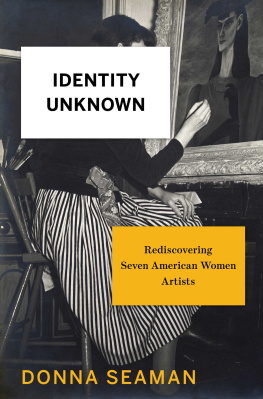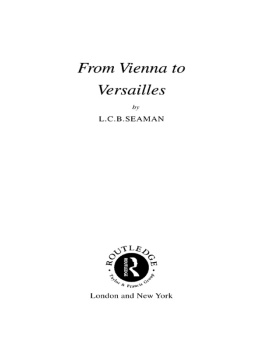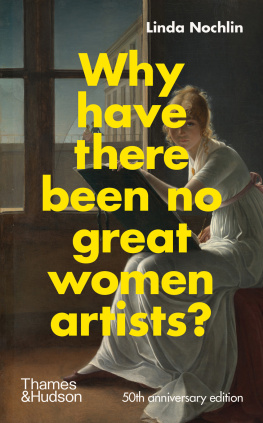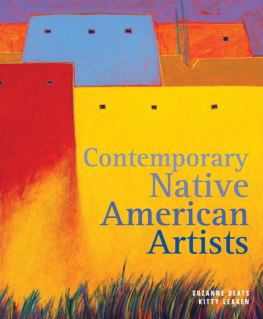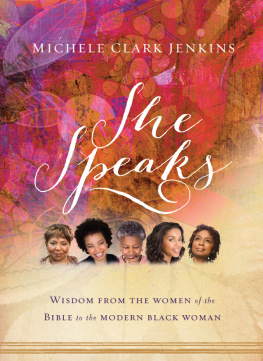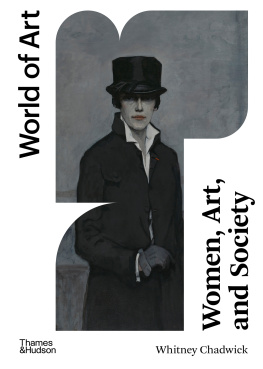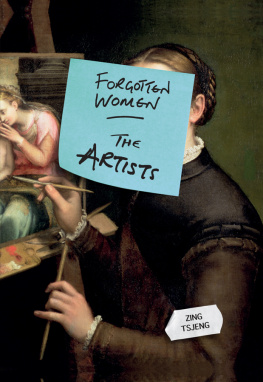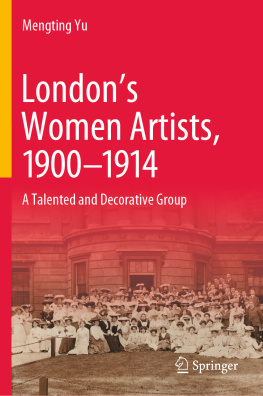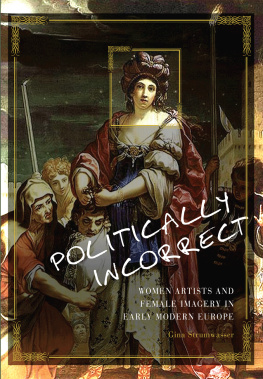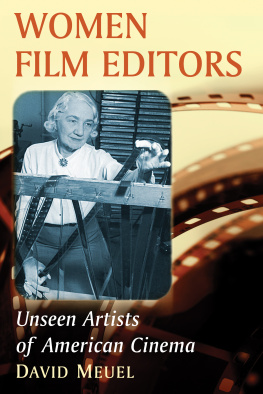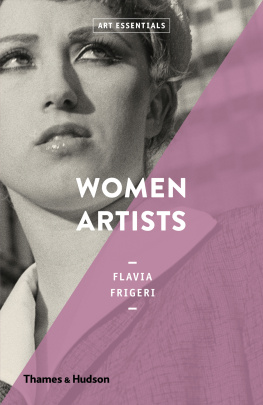IDENTITY UNKNOWN
For my loving, artistic, inspiring family,
Elayne, Hal, and David
And in memory of Claudia
BY THE SAME AUTHOR
Writers on the Air: Conversations about Books
In Our Nature: Stories of Wildness

Contents
The photograph is old; the quality of the black-and-white reproduction in the big, bulky book is poor, yet each artist in the group portrait is vitally present. Comrades and rivals, they are standing in front of a favorite caf; they are gathered in a garden; they are lounging on a beach, looking pleased with themselves. Maybe theyre seated around a table strewn with glasses and ashtrays, burning cigarettes in hands, heads tipped jauntily, suppressed hilarity making their eyes gleam. Or theyve been rounded up, encouraged to dress in their best, then posed together, self-consciously formal, in a studio or gallery, uneasily marking an artistic moment and courting the eye of posterity. The captions name each in order from left to right. The group might include Thomas Hart Benton, Max Ernst, Marcel Duchamp. Jackson Pollock, Mark Rothko, or Franz Kline. And a woman. The reader leans in for a closer look, curious about her, only to find the tag: identity unknown.
I used to come across such dismissive captions as an art student paging slowly and hungrily through art history surveys, intent on learning what the legendary modernist painters and sculptors looked like, where they hung out, how they interacted. As a young, aspiring female, I felt at once indignant and cynically amused at this failure to record a womans name and connection to the men by her side. This seemingly blas lack of interest implied that these anonymous women were of no interest, mere hangers-on, or some male artists girlfriend-du-jour or taken-for-granted wife. If the anonymous female was an artist among artists, why was her name not documented along with the others? Not only is the phrase identity unknown disparaging, it even gives off a noirish chill, a tabloid shiver, as though we all agree that its the womans own fault that her name has been lost and that, most likely, she came to an ignoble end. Identity unknown is what a weary clerk in a hospital or morgue would scrawl or type on a form that no one would ever look at again.
Its crushing enough if others dont know or care who you are, but its even more abjectly demoralizing when you have trouble pinning down your own identity because your sense of self, of vocation, of your abilities and your need to express yourself, are at dire odds with whats expected of you as a female: selfless devotion to home and family. In times of rigid social structures, each woman artist must have felt like a lone traveler without papers traversing a hostile land as she struggled to live a freely creative life. Women had to fight for access to artistic training traditionally reserved for men. Many felt that they had to choose between being an artist or a wife and mother. Between being ostracized or embraced. And if a woman artist did manage to carve out time and space to paint and sculpt, she was confronted by yet more obstacles to being taken seriously as an artist, let alone being treated as equal to her male peers. Of course, male artists have also faced a discouraging battery of endless hurdles. The words starving and artist are legitimately paired. The percentage of artists recognized versus artists working in obscurity is crushingly low; the same holds true for artists who are able to make their passion their livelihood versus those who must relegate art to their free time. The entire enterprise is quixotic.
But women artists were suspect and disreputable, unwelcome aliens who managed to slip into the gated male art world. And if, by dint of fierce perseverance and good fortune, an artist did achieve renown, it was undermined by reference to her sex and the inference that she was an anomaly. This was a maddening predicament because artists, like doctors, scientists, and writers, want to be identified according to their accomplishments, not their gender. None of the seven twentieth-century painters and sculptors portrayed here liked the designation woman artist. Yet being female had profound implications for their lives and their work.
For millennia, women were visible as the subjects, not the creators, of art. It is still difficult for women artists to sustain critical attention and respect. They are routinely accorded less space in shows and exhibitions; their works are priced lower than those of their male peers, and some who teach art continue to be paid less than their male colleagues. Many women artists struggle with apprehension, insecurity, anger, depression, and guilt. This makes the success of the seven artists presented here all the more remarkable.
Each of these exceptional artists, working in Chicago, New York, San Francisco, and Washington, D.C., were highly regarded during their lifetimes, if not nationally, certainly regionally. Their conviction and mastery did earn them encouragement and professional support from men: teachers, brothers, friends, lovers, husbands, sons, gallery owners, critics, and collectors. They exhibited regularly; their shows were reviewed; they posed for photographers and gave interviews to journalists, and they were honored with awards and grants. Collectors and museums purchased their work. But their renown was short-lived. All too soon their original, daring, and galvanizing paintings and sculptures were forgotten, put in storage and neatly excised from the pages of art criticism and art history. Outside the art world, very few people now recognize most of their names or their work. We tell and retell robustly romantic tales of revered and delectably infamous male artists, while lore about women artists is scant and neglected. For decades, there seemed to be room in the American pantheon for only one iconic woman artist, Georgia OKeeffe. There are many more stories to tell.
During the 1970s and 1980s, feminist art historians, critics, curators, and artists were on a mission to rescue women artists from the shadows. Linda Nochlin taught a trailbreaking course on women and art at Vassar College and Stanford University. Her controversial, now legendary essay, Why Have There Been No Great Women Artists?first published in Art News in 1971is an exacting and still bracing critique of the mythology of the great artist and the social institutions hostile or indifferent to all artists who fall outside the demographic of male and white. Nochlin concludes her meticulously presented, candid, disconcerting, and rallying argument with the observation that is rare and difficult at best, it is still rarer and more difficult if, while you work, you must at the same time wrestle with inner demons of self-doubt and guilt and other monsters of ridicule or patronizing encouragement, neither of which has any specific connection with the quality of the art work as such.
The outspoken, always riling scholar and writer Germaine Greer conducted extensive research into the fate of underappreciated woman painters working in the grand European tradition for her clarion history The Obstacle Race: The Fortunes of Women Painters and Their Work, published in 1979. Greer writes, when it comes to womens work is the consequence of the commentators condescending attitude. Any work by a woman, however trifling, is as astonishing as the pearl in the head of the toad. It is not part of the natural order, and need not be related to the natural order. Their work was admired in the old sense which carries an undertone of amazement, as if they had painted with the brush held between their toes. In a special corner reserved for freaks they were collected and disposed of, topped and tailed with compliment.

